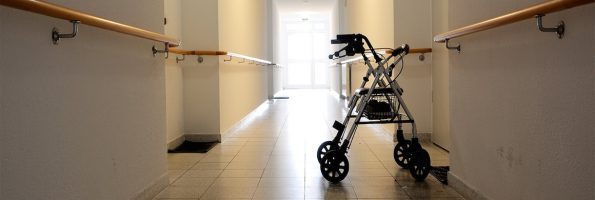What are the Best Healthcare MBA Degrees in Toronto?

The Toronto metro is not only home to a number of the finest business schools in Canada—it is is one of the top cities in North America for healthcare and human health sciences. According to the City of Toronto, the city’s life sciences sector employs nearly 30,000 professional and contributes more than $2 billion to the local economy. In a word, Toronto healthcare is huge.
MIT Prof Breaks Down Barriers and Future Problems in Home Health Care

The future of long-term home health care is fairly uncertain, according to new research from the MIT Sloan School of Management.
MIT Professor Paul Osterman’s new book, “Who Will Care for Us: Long-Term Care and the Long-Term Workforce,” posits that as Medicaid costs rise due to an aging boomer population, giving health care workers better training and compensation could improve the lives of clients and ultimately save the system money.
According to Osterman, home health aids have to overcome an attitudinal barrier that plagues the industry, which exists due in large part to the “status of the job, the hierarchical nature of medicine,” and the fact that workers are “overwhelmingly women and disproportionately people of color and immigrants.”
Home health aides, who represent a “large number of very low-wage workers,” navigate an isolating and “physically and emotionally challenging” job in which they “engage in everything from simple companionship to help with daily living activities.”
The lack of respect that insurance companies, policymakers, and even their fellow health care team members afford home health aides “constrains what they could potentially do.” Osterman argues that if some work could be shifted from nurses, for instance, to home health aides the cost savings would be extraordinary.
“We’d save on unnecessary calls to 911 and emergency room visits. We’d have better transitions out of acute care episodes at hospitals. We’d reduce the use of nursing homes. We’d also have better care of long-term chronic conditions, since home health aides could be health coaches. For instance, they could advise and help diabetic clients with exercise and diet. They could act as physical therapy assistants. They could help administer prepackaged medications.”
Osterman is optimistic about widespread industry shifts. He predicts there will be a “constituency of baby boomers pressing for reform, and since it is also in the interest of the work force, there is the potential for a consumer-worker alliance here.” Osterman also believes that the health care institutions that wield the most power—Medicaid and insurance companies—will eventually kowtow to this demand.
Stanford Professor Addresses Elder Care Crisis

Stanford’s Graduate School of Business recently published an article by Lee Simmons about the tenuous state of elder care, which can only serve 10 percent of the elderly American population who have insurance.
Continue reading…
